#warner bros studio wardrobe test
Text

warner bros studio wardrobe test of James Dean in 50s
#old hollywood#classic hollywood#1940s#classic cinema#classic films#classic movie stars#classic movies#1950s#james dean#warner bros studio wardrobe test
289 notes
·
View notes
Text
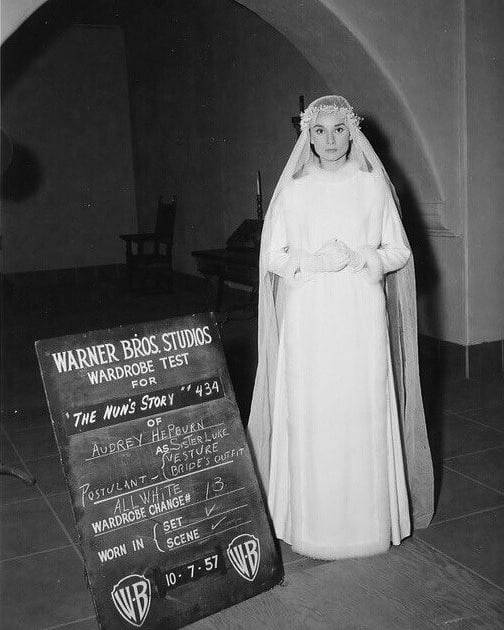
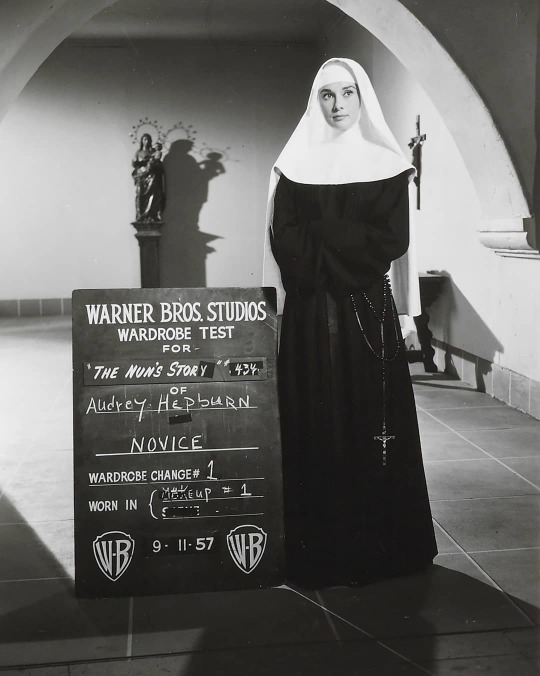

Wardrobe tests for The Nun's Story, Warner Bros Studios, 1958.
#audrey hepburn#classic hollywood#classic movies#classic film stars#classic stars#1950s aesthetic#beauty icon#1950s actresses#1950s vintage#1950s style
62 notes
·
View notes
Text
THE SIGN OF THE RAM and the Life of Susan Peters By Raquel Stecher
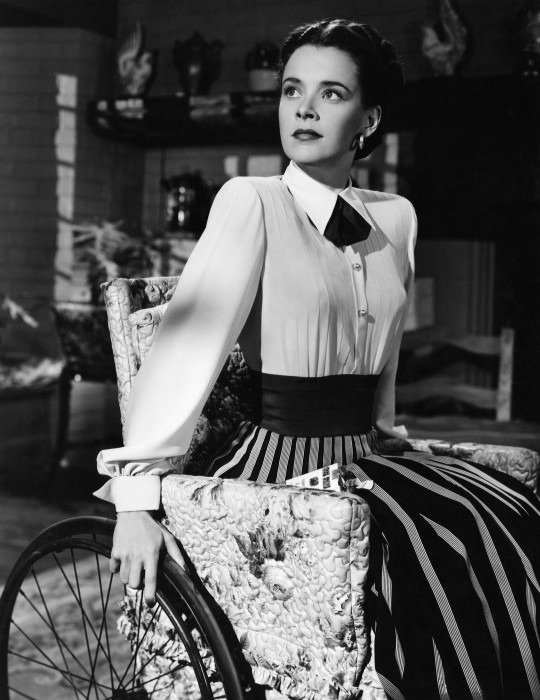
On January 1, 1945, actress Susan Peters’ life was forever changed. Peters was on a duck hunting trip with her husband, then actor and later director Richard Quine, and a few of her in-laws. As they were heading back from their hunt, Peters reached for a .22 caliber rifle that was hidden in some bushes. The trigger caught on a twig and sent a round into her stomach with bullet fragments lodging into her spine. She was rushed to the hospital. As a result of the accident, Peters was paralyzed from the waist down. Despite this setback, she persevered. She was hopeful that she could walk again, and when it became clear that her paralysis was irreversible, Peters forged ahead with her life, determined to continue with her still fledgling acting career.
Susan Peters didn’t start off wanting to be an actress. In fact, when she was studying in Hollywood High School, drama was her worst subject. But it was there that she caught the eye of talent scout Lee Shoelm, who invited her to do a screen test for the upcoming MGM film SUSAN AND GOD (’40). Peters had plans to become a doctor but decided to give acting a shot. If it didn’t pan out in a couple of years, she figured she would go to medical school instead. Peters was cast in bit parts in a variety of films for Warner Bros. and RKO. Warner Bros. gave her a contract, and Peters studied with Max Reinhardt to develop her craft.
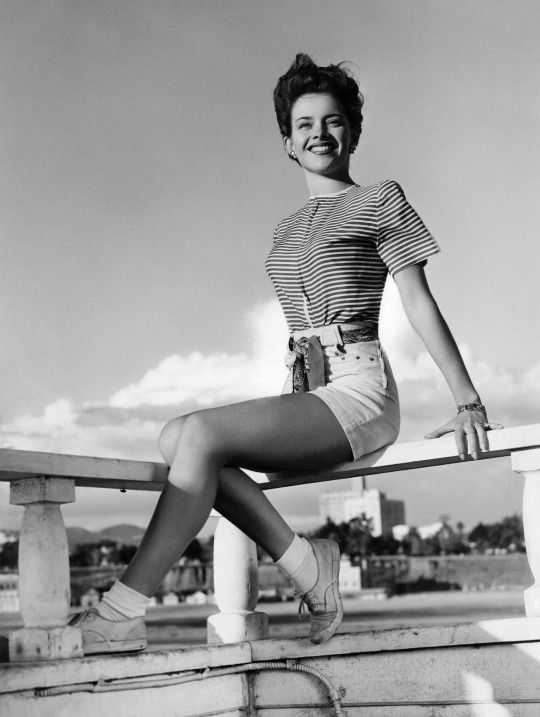
After appearing with Humphrey Bogart in THE BIG SHOT (’42), Warner Bros. dropped her from their studio roster. Warner Bros.’ loss soon became MGM’s gain. Director and producer S. Sylvan Simon saw something in Peters: she was charming and photogenic. Her delicate features and gentle nature made her perfect for the roles she was cast in. As historian Kirk Crivello once wrote, “fawnlike Susan Peters’ face had the perfection of a fragile porcelain doll.”
Simon recommended Peters to director Mervyn LeRoy who eventually cast her in the part of Kitty in RANDOM HARVEST (’42). This role would be the pinnacle of her career. Cast opposite matinee idol Ronald Colman, Peters was in acting heaven. She received an Academy Award nomination for her performance, and she seemed destined for greatness. MGM began grooming her for stardom. She got plum roles in WWII films like ASSIGNMENT IN BRITTANY (’42), SONG OF RUSSIA (’44) and KEEP YOUR POWDER DRY (’45).
Peters and Quine had planned to raise a family, but a particularly bad miscarriage landed her in the hospital and required her to take an extended break from acting. Her spinal cord injury meant that natural birth was out of the question, so she and Quine looked into adoption. In 1946, they adopted an 11-month-old boy they named Timothy Richard Quine. Actress Laraine Day threw a baby shower for her, and the adoption was celebrated by fellow actresses Anne Shirley, June Allyson and Eleanor Powell. Peters’ mother didn’t live to see the adoption as she tragically died of a heart attack 12 months after Peters’ injury.
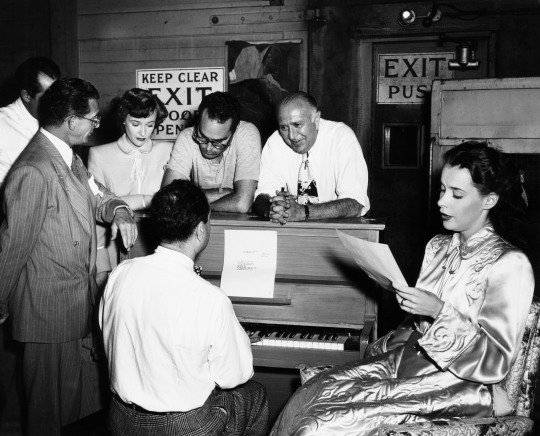
Peters had a strong network of supportive friends. One of her closest allies was Lucille Ball, who encouraged Peters to get back to work. MGM kept Peters under contract, paying her $100 a week and sending her scripts for consideration. In an interview Peters said, “Metro-Goldwyn-Mayer kept sending me Pollyanna scripts about crippled girls who were sweetness and light, which I kept turning down. Two years after my accident, I gave up and broke my contract. I won’t trade on my handicap.” If Peters was going to return to the silver screen, it had to be worth it. It had to be a role that would challenge her as an actress. Peters found that role in THE SIGN OF THE RAM (’48).
According to a New York Times article from 1947, Peters’ friend, actor Charles Bickford, brought her a copy of Margaret Ferguson’s best-selling novel THE SIGN OF THE RAM. In the novel Peters found her villain character, a wheelchair-bound poet who exhibits manipulative and possessive tendencies that threaten to destroy her family. Peters brought the novel to the attention of her agent Frank Orsatti, who in turn negotiated with then retired director Irving Cummings. Cummings started a production company with his son Irving Cummings Jr. called Signet Productions and clinched a deal with Columbia Pictures to produce and distribute the film. Orsatti negotiated for Peters to receive 33% of the film’s profits. THE SIGN OF THE RAM was Peters’ moment to prove herself. She shined as the film’s villainess. Even when the film got mixed reviews, critics praised her performance. Peters needed constant help on the set, and her husband, as well as her aunt, a trained nurse, were on hand to assist. According toThe Hartford Courant, a wheelchair was specially built for Peters and cost the studio $450. It was upholstered to match her Jean Louis-styled wardrobe.
THE SIGN OF THE RAM would be Peters final film, but it wouldn’t be her last acting project. She traveled East and appeared in off-Broadway productions of The Barretts of Wimpole Street and The Glass Menagerie (she received permission from Tennessee Williams to play the character Laura from a wheelchair). In an interview Peters said, “I never would have had the guts to go on the stage if I hadn’t been paralyzed… But I knew I had to find new ways of earning a living — or starve.”
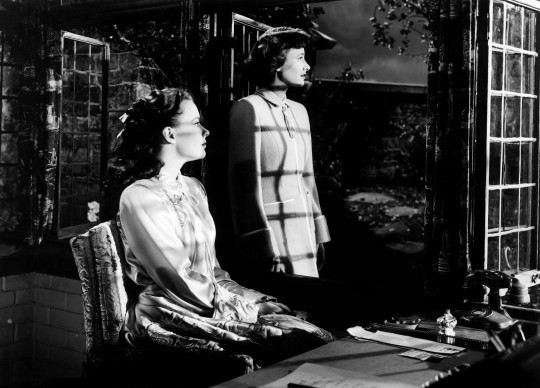
The now divorced Peters was determined to make it on her own to support herself and her son. She continued to suffer from complications from her injury and the medical bills were piling up. Peters kept busy by performing in Lux Radio broadcasts and writing articles for Photoplay magazine. She was contracted by NBC to star in a 15-minute afternoon show, televised live, called Miss Susan. On the show she played the title character, a small-town lawyer, and her disability was a prominent part of the story. The show kicked off in March 1951. It ran for 210 episodes, but by the end Peters had to be written out of several episodes due to her deteriorating health. After the show was canceled, Peters found herself in a dire situation. She traveled back to California to live with her brother. She kept her physical and mental health struggles to herself. She died on October 23rd, 1952 at the age of 31. The official cause was kidney failure and pneumonia and complications from anorexia nervosa, but her doctor was famously quoted as saying that “she had lost the will to live.”
Despite all odds, Susan Peters persevered. In the end, her health struggles overwhelmed her, and she just simply let go. In THE SIGN OF THE RAM, audiences get a glimpse of her potential as an actress, and we will always wonder about what could have been had Peters’ life followed a different trajectory.
#susan peters#disability#disability awarness#Sign of the Ram#TCM#Turner Classic Movies#old hollywood#MGM#Raquel Stecher
181 notes
·
View notes
Text

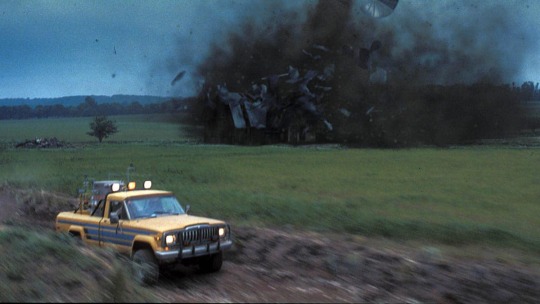



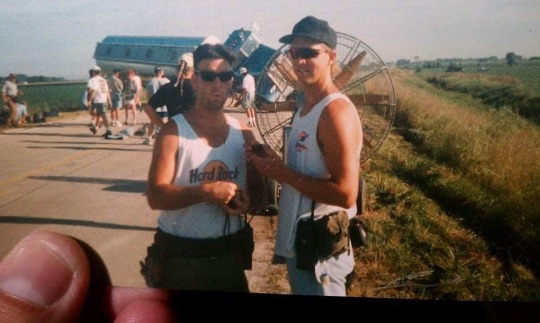
Twist 那個油罐車竟然是實景拍攝
電影
Crew Stories
昨天上午11:41 ·
On this day in 1996 Twister was released
"That's no moon, it's a space station!"
Tom Hanks was the original choice for the role of Bill Harding. Hanks read lines with the cast and even chose the character's wardrobe, which stayed in the final film, before dropping out. Kurt Russell and Michael Keaton were other possible considerations. Bill Paxton was chosen due to his "southern everyman charm" on a recommendation from director James Cameron. Another James Cameron connection is the name on the tanker truck that pushes Bill's pickup off of the tree is "Benthic Petroleum" which is the same oil company that Ed Harris' crew works for in The Abyss (1989).
The base camp (where the crew trucks and equipment are staged) for the end sequence was at a pig farm down the road from the well-house. Every morning the cast and crew were greeted by the smell of a 2-acre pig-waste holding pond in the middle of all the trucks.
2nd AD Richard Oswald shared with us that the legendary Newt Arnold, was the 1st AD would do a loud Tarzan howl when camera was ready!
During the hot summer shoot the crew went thru tons of Gold Bond for their “nether region” during dustings at lunch.
Crew stories member Jeff Machit shared this anecdote about his experience on the film,
my favorite Twister moment. “We’re working in the middle of tornado alley during the middle of tornado season. Many of the crew were concerned about what to do if we were threatened by a real twister. Production brought in the local TV weather man to reassure us. He told us not to worry as we have an on site Doppler radar. The radar would give us a 15 minute warning. He also reassured us that there were two helicopters standing by to evacuate all the above-the-line personnel. The rest of crew should find a ditch to jump into.”
Some crew members, feeling that De Bont was "out of control", left the production five weeks into filming. The camera crew led by cinematographer Don Burgess ASC claimed De Bont "didn't know what he wanted till he saw it. He would shoot one direction, with all the equipment behind the view of the camera, and then he'd want to shoot in the other direction right away and we'd have to move [everything] and he'd get angry that we took too long ... and it was always everybody else's fault, never his". De Bont claims that they had to schedule at least three scenes every day because the weather changed so often, and "Don had trouble adjusting to that".
When De Bont threw down a camera assistant in a fit of rage, Burgess and his crew had enough and walked off the set, much to the shock of the cast.
I just talked to the AC now a operator and he shared this with us.
“Looking back on it, I wish I had the self confidence and awareness to make an official complaint to the studio. But I was 32 years old with two young kids and I was afraid it would affect my ability to find work. Obviously, those were different times.”
The camera grip and electric crew remained in place for one more week until cinematographer Jack N. Green's crew agreed to replace them.
Unfortunately with just two days left of principal photography Jack Green was injured on stage, a warehouse. The set was built so the second floor would drop. It was very hot and there was air conditioning that was very loud.
A test of the floor dropping was going to be done. The 1st AD called it out. Jack was underneath and because of the air conditioning didn’t hear the warning. Jack was instructing lamp operator Matt Hawkins to adjust a light and in doing so moved him out of harms way. Unfortunately for Jack the dropping floor hit him injuring his back. Jack spent some time in the hospital. Jan De Bont took over cinematography duties for the remainder of the shoot.
Halfway through filming, both Bill Paxton and Helen Hunt were temporarily blinded by bright electronic lamps used to make the sky behind the two actors look dark and stormy. Paxton remembers that "these things literally sunburned our eyeballs. I got back to my room, I couldn't see". To solve the problem, a Plexiglas filter was placed in front of the
beams. The actors took eye drops and wore special glasses for a few days to recuperate. After filming in a particularly unsanitary ditch (for the first tornado chase scene, in which Bill and Jo are forced to shelter from an approaching F1 tornado under a short bridge), Hunt and Paxton needed hepatitis shots. During the same sequence, Hunt repeatedly hit her head on a low wooden bridge, so exhausted from the demanding shoot that she stood up so quickly her head struck a beam. During one stunt in which Hunt opened the door of a vehicle speeding through a cornfield, she momentarily let go of the door and it struck her on the side of the head. Some sources claim she received a concussion in the incident. De Bont said, "I love Helen to death, but you know, she can be also a little bit clumsy. " She responded, "Clumsy? The guy burned my retinas, but I'm clumsy ... I thought I was a good sport. I don't know ultimately if Jan chalks me up as that or not, but one would hope so".
To simulate the high speed winds that occurs during a tornado and Ritter fans weren’t enough special effects Legend John Frazier and his effects crew (the real heroes of this production) procured some jet engines from a Boeing 707 and mounted them to flatbed trailer! This crew pulled off some pretty epic stuff on this one from dropping tractors from cranes and helicopters to driving a truck thru the facade of a tumbling house!
The instrument package used in the movie, "Dorothy", is an homage to the instrument pack real tornado researchers attempt to place in the paths of tornadoes, "T.O.T.O.".
Lois Smith's character is reading Dante Alighieri's Inferno when the twister hits Wakita. The book also features a tornado in the second circle of Hell that punishes people ruled by Lust.
After the team leaves Wakita, there is a seemingly impossible helicopter shot in which the camera descends several hundred feet in a matter of seconds, ending up mere feet from Jonas's convoy. This was achieved by having the cars drive slower than usual and then speeding up the film.
A recording of a camel's moan was slowed down and used as the sound of the tornado.
Although Amblin Entertainment has collaborated with both Warner Bros. and Universal on many occasions (Amblin co-founder Steven Spielberg directed films for both studios), as of 2014, this film marks the only time Amblin collaborated with both studios on the same film.
The real town of Wakita, Oklahoma had part of its old downtown area demolished by the film crew for the scenes after the twister passes. The studio then paid for the downtown to be rebuilt. The town also kept the new fire truck used in the film
De Bont insisted on using multiple cameras, which led to the exposure of 1,300,000 feet (400,000 m) of film, compared to the usual maximum of 300,000 feet (91,000 m). The 35mm short ends were used to shoot Jon Favreau’s SWINGERS.
pre production in Oklahoma was briefly delayed due to the bombing of the Alfred P. Murrah Federal Building in Oklahoma City on April 19, 1995. Many of the crew went to the site to help with recovery efforts.
This was the first movie released on DVD, and the last released on HD-DVD.
After Bill Paxton died, Spotter Network choreographed 200 storm chasers to spell out "BP" with their GPS tracker blips on a radar display to honor him. This kind of tribute had only been done five times before, and it was the first time it had been done for someone who wasn't a storm chaser.
(IMDb/Wikipedia/crew stories) some photos from Sound utility and crew stories member Robert K. Maxfield and Paxtonmobile by Mel Roswell,excerpts from a previous post from Matt Hawkins, Jim Plannette, Richard Oswald
If you recognize any crew members comment so we may update.
A special Thank you to every crew member that endured this production, you were deep in the suck and it was worth it! These kinds of popcorn movies inspired many of us to pursue a career in the filmmaking process.
1 note
·
View note
Text
Inside ‘Blade Runner’
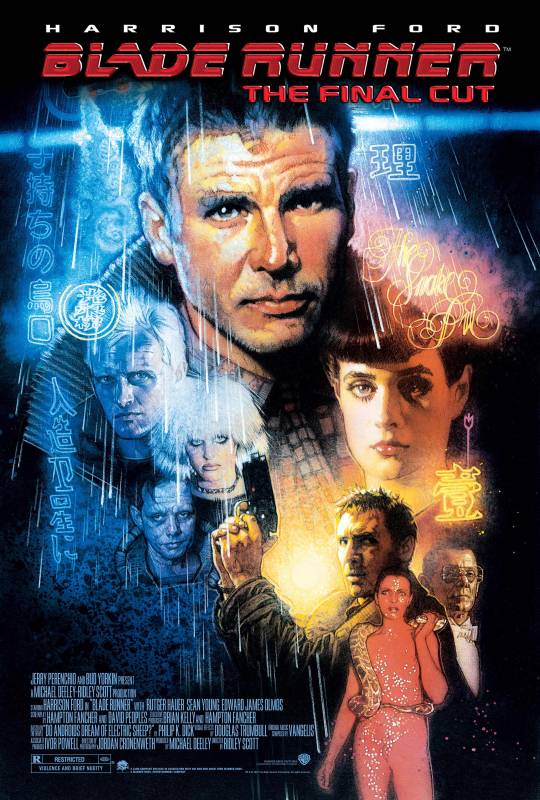
Sobre 'Blade Runner' de Ridley Scott en 1982.
'On the edge of Blade Runner', Andrew Abbott, guión Mark Kermode, Nobles Gate Ltd., Channel 4, 2000, VO.
youtube
'Blade Runner: The final cut', tráiler, 2015.
youtube
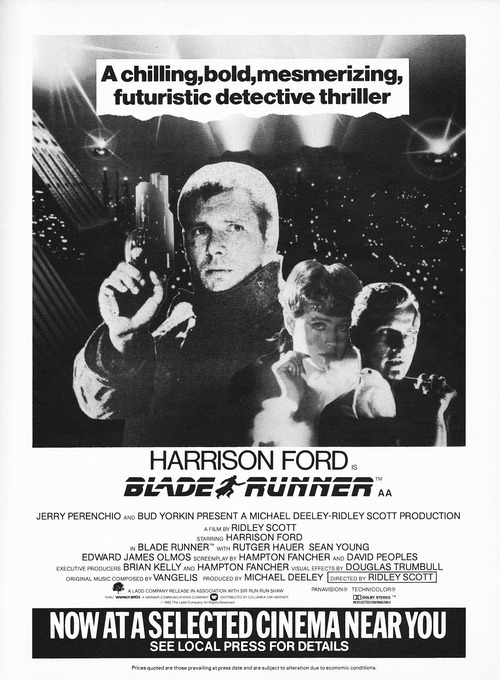
‘New Voyager magazine’, n º 1 de 1982. Artículo ‘Blade Runner - Death of a thousand cuts’.
'Future shocks', TV Ontario, 2003, VO, SE en YouTube.
youtube
00:00. 'Promoting dystopia: Rendering the poster art', Charles de Lauzirika, 2007, VO.
06:40. 'Fashion forward: Wardrobe and styling', íd.
27:20. 'The light that burns: Remembering Jordan Cronenweth', íd.
00:00. Continuación. Íd.
14.07. 'Nexus generation: Fans & filmmakers', íd.
00:00. Continuación. Íd.
04:13. 'Screen tests: Rachel and Pris', íd.
13:11. 'Trilers & TV spots', íd.
1981 Teaser trailer.
1982 Theatrical trailer.
1982 TV spot.
1992 ‘Director’s cut’ trailer.
2007 ‘Dangerous days’ teaser trailer.
2007 ‘Final cut’ trailer.
23:00. 'Signs of the times: Graphic design', íd.
00:00. Continuación. Íd.
06:11. 'Deleted & alternate scenes', producción, íd.
Presenta en orden cronológico las 24 escenas eliminadas y/o cambiadas de la versión de ‘Blade Runner’ de 1982, con una voz en off de Harrison Ford en algunos segmentos, no escuchada en ninguna de las diferentes ediciones del film. Son las siguientes.
Deckard visita a Holden en el hospital.
Gaff y Deckard entran en el edificio de la central de policía.
Escena adicional con los vehículos volando en el cielo mostrando un expediente sobre los replicantes.
Escenas adicionales en el apartamento de León ocultando en el techo y Gaff haciendo un origami.
Más escenas en Chinatown.
Escenas adicionales en las calles.
Escena de amor extendida entre Deckard y Rachael.
Deckard y Holden hablando en el hospital de nuevo observados por Gaff y Bryant.
Escena alternativa con Roy Batty y J. F. Sebastian subiendo el edificio Tyrell en un ascensor con resultado diferente.
Dos finales alternativos entre Deckard y Rachael, incluyendo la frase "a usted y yo nos hicieron el uno para el otro", después de la pregunta “¿nosotros somos novios?” de Rachael.
00:00. Continuación. Íd.
21:37. 'Deck-A-Rep: The true nature of Rick Deckard', Charles de Lauzirika, 2007, VO.
00:00. Continuación. Íd.
'Días peligrosos: Creando Blade Runner' (‘Dangerous days: Making Blade Runner’), Charles de Lauzirika, 2007, 214', VOSE.
000:00. 'Dangerous days: Making Blade Runner'. Time apr:
002: ‘Incept date 1980: Screenwriting and dealmaking’.
030: ‘Blush response: Assembling the cast’.
053: ‘A good start: Designing the future’.
079: ‘Eye of the storm: Production begins’.
108: ‘Living in fear: Tension on the set’.
138: ‘Beyond the window: Visual effects’.
166: ‘In need of magic: Post-production problems’.
189: ‘To Hades and back: Release and resurrection’.
'30 años de Blade Runner', Días de cine, RTVE, 2012, VE.
youtube
'Behind the scenes out takes', VO.
Footage incluido en 'Dangerous days: Making Blade Runner'.
youtube
'Blade Runner. Promo convention reel', MK Productions, 1982, VO.
Footage incluido en 'Dangerous days: Making Blade Runner'.
Promo reeel realizada en 16mm para promocionar la película en convenciones de ciencia ficción de EEUU. Incluye entrevistas con Ridley Scott, Douglas Trumbull y Syd Mead.
youtube
'Blade Runner. On the set. Filming location', Herve Attia, 2012, VO.
youtube
00:00. 'The workprint', Charles de Lauzirika, VO.
00:50. 'All our variant features. From work print to final cut', íd.
00:00. 'On the set'.
14:20. 'Behind the scenes'.
27:30. 'Out takes'.
Clip 'Eldon Tyrell sospecha que es un replicante', VOSE.
Clip 'Rachael', VO.
'Final original versión 1982', VOSE.
'Escena Como lágrimas en la lluvia', VO.
'Fan reel', VO.
'Tráiler promo TV Portugal, 1883', VOSE.
'Tráiler White Dragon cut 4.0', VO.
'Tráiler 3D ficción', VOSE.
'Tráiler noire', VO.
'Blade Runner - The aquarelle edition', Anders Ramsell, 2013, VOSE.
'Blade Runner in 60 seconds', 1A4 Studio, 2013, VO.
'Theme end titles'.
Clips de Warner Bros. en lista de reproducción, VOSE.
'Tortoise? what's that?'.
'I want more life, father'.
'Deckard vs. Pris'.
'Benefit or a hazard'.
'Tears in rain'.
'30th Anniversary trailer'.
'Premiere en Venecia Film Festival', VO.
'Escena eliminada', VOSE.
youtube
'Ridley Scott on Blade Runner', VOSE.
'Ridley Scott confirma que Deckard es un Replicante', VOSE.
'Ridley Scott on Harrison Ford: As Deckard in Blade Runner', VOSE.
'Harrison Ford on Blade Runner', VOSE.
'Harrison Ford on Letterman late show, 1982', VOSE.
'Rutger Hauer on Blade Runner', VOSE.
'Rutger Hauer on Blade Runner', VOSE.
'Rutger Hauer talks Blade Runner, being typecast as bad guy & more in rare 1985 interview', audio, VO.
youtube
'Sean Young en la radio Red Ice Radio 562012', audio VO.
'Sean Young on Blade Runner', VOSE.
'Edward James Olmos on Blade Runner', VOSE.
‘Zhora on Blade Runner', VO.
'Syd Mead artist on Blade Runner', VOSE.
'Syd Mead artist on Blade Runner', VOSE.
'Joel Johnson interview Syd Mead', VOSE.
'The life & art of Syd Mead', VOSE.
'Syd Mead. 2019: A future imagined', VOSE.
'Futurist Syd Mead on designing the Blade Runner spinner', VO, SE en YouTube.
youtube
'Douglas Trumbull on Blade Runner'.
'Douglas Trumbull on Blade Runner', VOSE.
'Mark Stetson sobre maquetas de edificios', VO.
'Terry Rawlings in conversation', Signals Work in Progress, 2013, VO.
vimeo
'What Blade Runner teaches us about filmmaking', CinemaTyler, 2017, VO.
vimeo
'Tráiler 1982 - 3.38', VO.
youtube

Starbusrt nº 51
En Wikipedia 'Blade Runner' y Ridley Scott.
Recomiendo a los fans del film visitar las websites Future Noir y Ridleyville.
0 notes
Link
Ninety years ago, future screen legend Cary Grant shared a Greenwich Village love nest with an Australian man who went on to win three Oscars.
That’s the provocative claim in “Women He’s Undressed,’’ a new documentary about celebrated costume designer Orry-Kelly (released Aug. 9 on DVD and video on demand) that adds a tantalizing new chapter to decades of speculation about Grant’s sexuality.
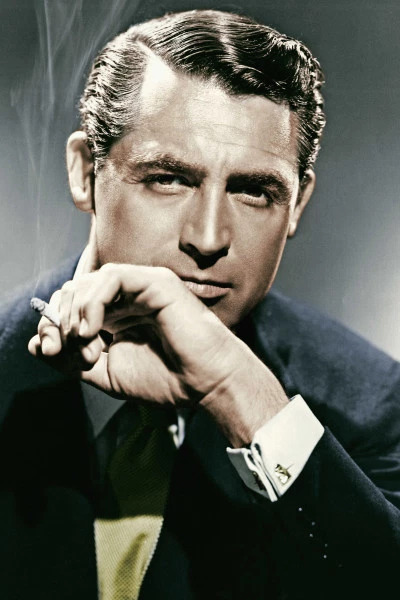
Between the film and Kelly’s recently published, long-suppressed memoir “Women I’ve Undressed,’’ a vivid portrait emerges of Grant as an ambitious young immigrant vaudevillian who reinvented himself so thoroughly, he ended up denying his true self in a homophobic industry.
“There was such a pressure to conform to what was considered an ordinary, normal life,’’ the documentary’s noted Australian director, Gillian Armstrong, told Out Magazine last year, referring to Grant’s four failed marriages to women. “Orry refused to hide his sexuality with a fake marriage. He had such a great sense of personal integrity, and we wanted to capture that sense of bravery in the film.’’
Kelly, who was seven years older, writes in his memoir that he met the struggling performer Archibald Leach — who would change his name to Cary Grant in 1931 — just before his 21st birthday in January 1925.
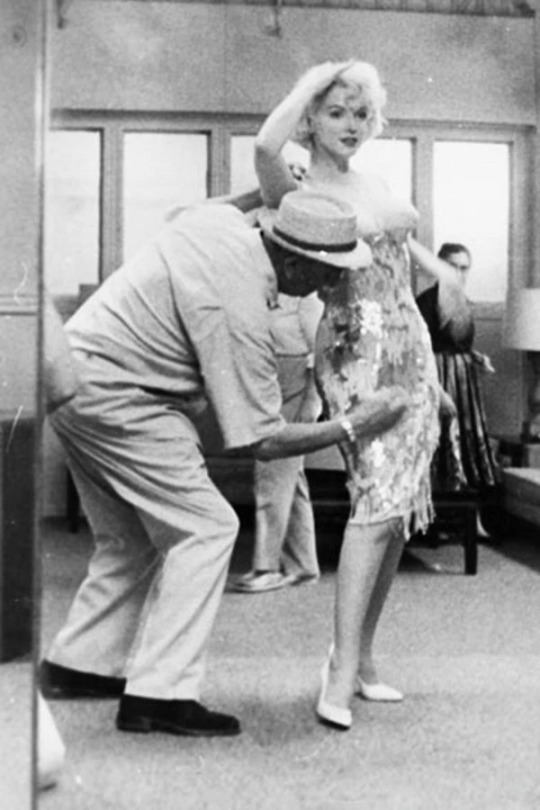
Leach had been evicted from a boarding house for nonpayment, and had turned up at Kelly’s artist’s studio at 21 Commerce St. in the West Village with a tin box containing all his worldly possessions. He promptly moved in with Kelly.
“It was a city of bachelors,’’ film historian William J. Mann says in the documentary, arguing that Kelly and Leach were definitely a couple. “You were surrounded by men who were openly living in ways you couldn’t imagine back home.’’
Kelly says in his book that Leach was suffering from an unspecified illness during their first few months of cohabitation, and he paid the younger man’s doctor bills. The “devastatingly handsome” Leach, who had come to America from his native England as a teenager as part of a stilt-walking troupe, was barely scraping by, working occasionally as a carnival barker in Coney Island and donning a threadbare suit as a paid escort for women while seeking work in vaudeville.
Kelly, who was painting murals for speakeasies and trying to break into show business as a set designer, had developed a lucrative sideline of hand-made ties — and Leach volunteered to stencil on designs and sell them backstage at vaudeville houses for a cut of the action.
Branching out a couple of years later, the two men briefly ran their own speakeasy in Manhattan — and had an even more short-lived casino in Nevada before they were shut down by gangsters who demanded money to spare their lives.
Kelly’s memoirs, and the documentary, chronicle his volatile, on-and-off relationship with the actor over three decades. While Kelly stops short of claiming that Leach was his boyfriend — something the documentary states outright — Kelly leaves a clear impression of someone whose heart was broken many times.
He was clearly annoyed with Leach’s obsession with blond women, “though he always comes home to me.’’ And Kelly describes being knocked out cold by Archie “for three hours’’ when he criticized his roommate for ignoring his vaudeville guests (including Jack Benny, George Burns and Gracie Allen) at a party while trying to persuade Charlie Chaplin’s sister-in-law to help him arrange a screen test.
“The physical violence between the men [was] not uncommon between homosexual men of the period,’’ Katherine Thompson, the documentary’s writer, told The Post. “A combination of self-loathing and confusion was manifested in a punch-up or, on another occasion, Grant throwing Kelly out of a moving vehicle.’’
By 1931, both men were pursuing their destiny in Hollywood — the newly renamed Cary Grant had been signed to a $350-a-week contract by Paramount, while Kelly had begun a 12-year tenure as the head of the Warner Bros. costume department, eventually designing Ingrid Bergman’s famous wardrobe for “Casablanca.” They shared quarters again for a few weeks in Tinseltown, enjoying 65-cent drugstore dinners every night.
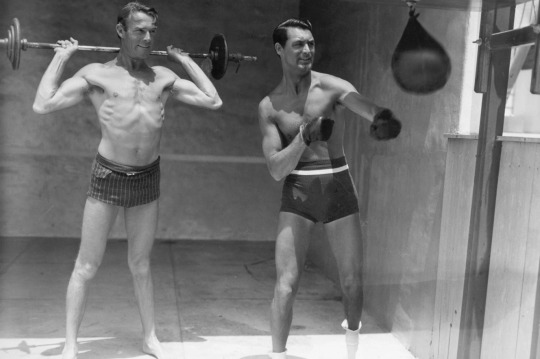
But there were an increasing number of arguments over the newly christened Grant’s women — and the actor’s demand that Kelly reimburse him $365 for meals and boxing-match tickets that he kept track of in a little red book. Kelly paid off the bills and suggested that Grant move in with another handsome young Paramount contractee, Randolph Scott.
The debate over whether the former Archie Leach was gay, bi or straight has centered for decades around his on-and-off cohabitation with Scott in a beach house in Malibu, which was documented in a famous series of still photographs of them in domestic poses.
When Grant married actress Virginia Cherrill in 1934, Mann says in the documentary, Scott attempted suicide. They were living together again after the end of Grant’s marriage in 1935, and re-reunited once more after Scott’s first marriage (1936-1939) to a duPont heiress ended. (Grant’s 1942 application for US citizenship lists him and Scott — who signs as a witness — as living at the same address.) Around this time, Grant threatened to sue gossip columnist Hedda Hopper for implying he wasn’t “normal.’’ (And in 1980, he actually brought a defamation suit against comedian Chevy Chase, who was forced to issue a retraction of his joking reference to Grant as a “homo.’’)
Grant and Kelly, meanwhile, had drifted apart. “He was adjusting to the mask of Cary Grant,’’ Kelly writes. “A mask that became his career, a career that became Grant.’’
The two crossed paths in 1941, when Grant made “Arsenic and Old Lace’’ at Warner Bros.
“There was quite a bit of tension between the two,’’ Mann says in the documentary. “One day, the radio show ‘Queen for a Day’ had sent a limousine to the studio lot with [its title] emblazoned on its side. Cary turned to Orry and said, ‘Orry, your limo has arrived.’ This was a real low blow from Cary Grant, with whom he had an intimate personal relationship.’’
Kelly had a drinking problem that eventually cost him his job at Warner and landed him in rehab — but he made a remarkable comeback that netted him Oscars for “An American in Paris’’ (1951), “Les Girls’’ (1957) and “Some Like it Hot’’ (1959), for which he designed unforgettable dresses for Marilyn Monroe.
Grant re-entered Kelly’s life in the late 1950s, when he asked if he could visit Kelly’s studio to purchase some paintings as gifts.
Kelly’s book implies that Grant (who Kelly says visited on multiple occasions) was more interested in discouraging Kelly from writing about their relationship — and the film says Grant may have used his influence to block the publication of Kelly’s memoir. (The manuscript was discovered in a pillow case at an Australian relative’s home in 2014 while the documentary was in production; it is available only as an audio book in the US.)
“Cary always told me, ‘Tell them nothing,’ ” Kelly writes. “I don’t know why. There was never really anything to hide.’’
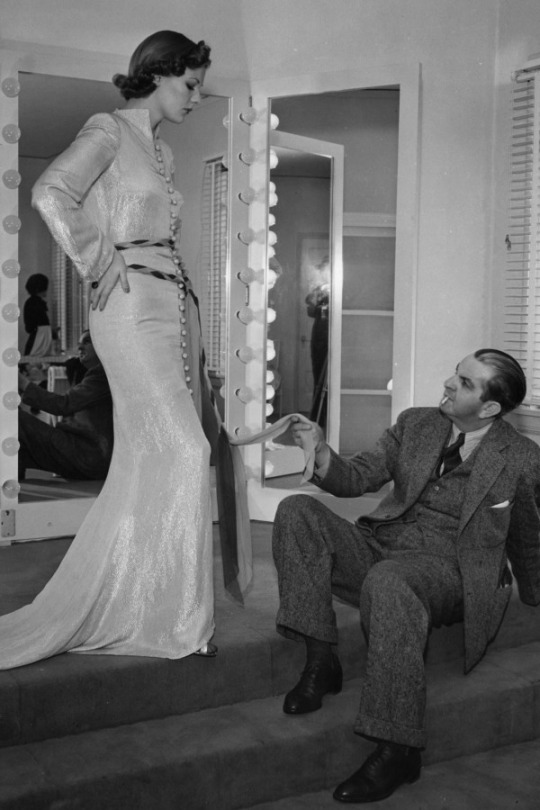
But the cheeky Aussie ends his book with a devastating anecdote about the notoriously cheap Grant. At the time of their final reunion, Kelly was designing costumes for “Auntie Mame’’ (1957) starring Rosalind Russell, Grant’s co-star in “His Girl Friday’’ (1940) and a close friend.
After he and Grant lunched together, they drove over to Russell’s dressing room on the Warner Bros. lot.
“I mentioned his beautiful Rolls Royce outside, and Cary remarked that he had another, just like it, in London. ‘By the way, aren’t you going to London?’ he asked [Russell].
“Roz said, ‘Yes, I’m going over in ten days.’ ‘Why don’t you use my Rolls,’ Cary said.”
Russell was thrilled until Grant added: “I tell you what to do Roz, when you arrive in London, call … my agents. They will give you the rental fee and the cost of the chauffeur.’’
Kelly says there are “too many instances where Cary Grant’s old friends had been disappointed by him.’’ He quotes Russell as saying, “He flits around, hiding from his own shadow, hoping nobody will notice, or [worries] that his shadow may expose the image he has created for himself.’’
The former Archie Leach never publicly acknowledged his relationship with Kelly — but when his old friend died of liver cancer in 1964, Grant was one of the pallbearers. He retired from acting two years later, when his only child was born from his fourth marriage to actress Dyan Cannon.
The enigmatic superstar was five years into his fifth and final marriage when he died, 30 years ago this November. Randolph Scott, whose second marriage endured 43 years and produced two children, died two months later.
2 notes
·
View notes
Photo
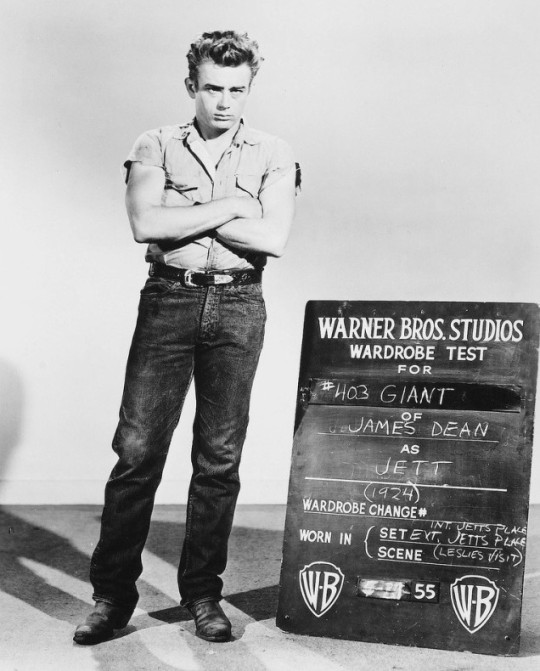
Dressed for the Part
jeans & boots & Jett Rink
wardrobe test for “Giant” -- Warner Bros. Studios
Happy Birthday, James Dean!
0 notes
Text
The Batman: è gara fra Robert Pattinson e Nicholas Hoult
Nuovo post su italianaradio https://www.italianaradio.it/index.php/the-batman-e-gara-fra-robert-pattinson-e-nicholas-hoult/
The Batman: è gara fra Robert Pattinson e Nicholas Hoult
The Batman: è gara fra Robert Pattinson e Nicholas Hoult
The Batman: è gara fra Robert Pattinson e Nicholas Hoult
Il cerchio si stringe e ora tutto sembra ufficiale: uno tra Robert Pattinson e Nicholas Hoult infosserà i panni di Bruce Wayne in The Batman, nuovo adattamento – e reboot – delle indagini del crociato di Gotham affidato a Matt Reeves (Cloverfield, Apes Revolution – Il pianeta delle scimmie).
Da quanto riporta Umberto Gonzalez di the Wrap infatti, i due attori si starebbero contendendo la parte e negli studios della Warner Bros. sono iniziati i test con l’uniforme che verrà sfoggiata nel film.
“Aggiornamento su BATMAN: Robert Pattinson e Nicholas Hoult stanno effettuando i test screening per il ruolo. Sospetto che si stiano provando la Batsuit, perché il reparto costumi avrà bisogno di una prova completa del guardaroba. Inoltre, la produzione del film inizierà nel primo trimestre del 2020″.
Chi la spunterà tra Pattinson e Hoult?
Di recente un post “misterioso” del dirigente del reparto creativo della DC Jim Lee sembrerebbe suggerire il casting dell’attore di Cosmopolis e Twilight, ma ovviamente attendiamo responsi dallo studio.
BATMAN UPDATE: Robert Pattinson & Nicholas Hoult are screen testing for the role. I suspect they’re screen testing in the Batsuit because Wardrobe Department will need full wardrobe test. Additionally, the film will now start production in Q1 2020.🦇 pic.twitter.com/eekafrqomL
— Umberto Gonzalez (@elmayimbe) May 30, 2019
The Batman: un dirigente DC conferma il casting di Robert Pattinson?
In attesa che venga confermato il prossimo interprete di Bruce Wayne, vi ricordiamo che le prime indiscrezioni su The Batman circolate online ipotizzano un’ambientazione negli anni Novanta, epoca tornata di moda nel corso dell’ultima stagione anche grazie al successo di un altro cinecomic, Captain Marvel dei Marvel Studios.
Per alcuni 1990 fa rima con gli adattamenti di Batman di Tim Burton che prepararono le basi per i futuri cinefumetti e che sono stati fonte di ispirazione per Zack Snyder per quanto riguarda una scena particolare di Batman V Superman: Dawn of Justice(dove il regista aveva omaggiato lo scontro tra il cavaliere oscuro e Pinguino di Batman Returns del 1992), per non parlare del fatto che alcune delle più importanti trame a fumetti sul personaggio provengono proprio da quel decennio.
Secondo i report, Reeves ha optato per le storie di Batman: Anno Uno come possibile punto di riferimento, proprio per conferire al suo film un tono da genere noir enfatizzando le capacità investigative dell’eroe. Nessuna notizia ufficiale invece sul casting, con la Warner Bros. impegnata a trovare il perfetto sostituto di Affleck e altri interpreti che possano riempire la ricca galleria di villain prevista.
Per The Batman è stata già fissata l’uscita in sala il 25 giugno 2021.
The Batman: ecco i nomi dei primi villain del film
Fonte: The Wrap
Cinefilos.it – Da chi il cinema lo ama.
The Batman: è gara fra Robert Pattinson e Nicholas Hoult
Il cerchio si stringe e ora tutto sembra ufficiale: uno tra Robert Pattinson e Nicholas Hoult infosserà i panni di Bruce Wayne in The Batman, nuovo adattamento – e reboot – delle indagini del crociato di Gotham affidato a Matt Reeves (Cloverfield, Apes Revolution – Il pianeta delle scimmie). Da quanto riporta Umberto Gonzalez di […]
Cinefilos.it – Da chi il cinema lo ama.
Cecilia Strazza
0 notes
Photo
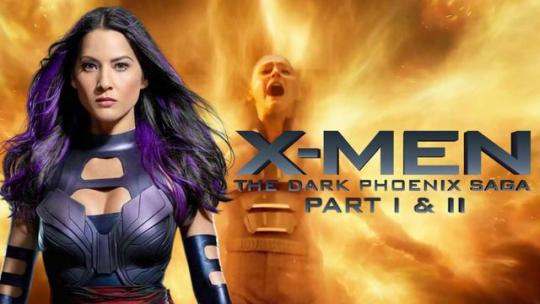
collider:
Olivia Munn Teases X-Men: Dark Phoenix As A Two-Parter
No one knows the evil warlord Garmadon (voiced by Justin Theroux), aka The Worst Guy Ever, better than his ex-wife, Koko (voiced by Olivia Munn), and when it comes to their son Lloyd (voiced by Dave Franco), the eternally optimistic mother just wants to help him survive adolescence. But in The LEGO Ninjago Movie, being a high school teenager isn’t easy for Lloyd because everyone knows that his father won’t stop until he’s achieved world domination, which can make friendships tough to keep and teenage life insurmountable.
While at the LEGOLAND California Resort for the film’s press junket, Collider got the opportunity to sit down with actress Olivia Munn to talk about why she wanted to be a part of The LEGO Ninjago Movie, what she loves about her character, why Koko was so much fun to play, what she’s like her superpower to be, if she were a secret ninja, and why she wants to move in with Justin Theroux and Jennifer Aniston. She also talked about her cameo in Ocean’s Eight and how she was responsible for her own wardrobe, hair, and make-up, and why Simon Kinberg, who’s making his directorial debut on X-Men: Dark Phoenix, makes such a great director.
Collider: What sold you on the LEGO Ninjago Movie and made you want to be a part of it?
OLIVIA MUNN: Well, I didn’t really have to be sold. I hadn’t seen LEGO Batman yet when I signed on for this, but I had seen the first LEGO movie. What’s so great about the LEGO movies is that, from the get-go, they were made in a way that wasn’t just adult-friendly, but you don’t have to have a kid with you to go see them. They’re edgy and funny and clever. The toys are the toys, and I love that about these movies. It really allows for the actors to bring so much life to them, and I really love that. It was so much fun!
Who is Koko and how does she fit into the city of Ninjago?
MUNN: What I love so much about Koko is that she’s this always optimistic mother. A lot of kids his age are going through some tough times, and he happens to be going through a very tough time ‘cause his father is an evil warlord and the whole school knows it. It’s like, “Your dad’s the worst guy, ever, and we know that!” She tries to be so positive, and I just love that so much about her. And I love that she has this other side to her, that gets revealed in the movie, but she chose to keep that private from her son. I love that she has this whole other dimension to her. I wanted her to be a positive force in Lloyd’s life. No matter what, she was going to love him through it and be super positive. And then, we find out this other side to her life, and I loved that so much. You might look at her like a mother who’s just being super positive, and that there’s all there is to it, but when you find out about the other life that she’s had and what she’s capable of, it makes you realize that, out of all the roads she could have chosen with all of her capabilities, she chose to be a mother. She could have been a hero for many, but she chose to be a hero for one. That, to me, was so special because it really shows the importance of what being a mother is. Out of all the amazing roads, she could choose, she chose the most amazing of all, which was to be a mother to Lloyd. I loved that so much.
Even before we know about Koko’s previous secret life, we get to see what a fierce temper she has when it comes to Garmadon. Was that fun to play?
MUNN: That was really fun, to play the momma bear who’s like, “I don’t care if you’re the biggest evil warlord! You’re annoying me right now, and I’m not afraid to tell you that!” That’s why I feel I had a kindred spirit with Koko. That’s how I live my life. The one thing we all have in common is that I exist as much as you exist. You can be the President of the United States, you can be an evil warlord, or you can be the head of a studio, but I’m here and you’re here. We may have different paths. You may be a lot more powerful and really wealthy, and all of those things, but we both exist and we’re both here, so I’m gonna treat you as a human being. What I see in you and how you treat me is what you’re gonna get back, and that’s Koko. She’s the one person in the world who’s not intimidated by Garmadon because she’s like, “I know you! You can be fancy with all of your evil warlord get-up, and your helmet and block clothes, but I know who you are! It’s all a facade, and I don’t care!”
Could you ever have imagined a world where you and Justin Theroux would be playing parents to Dave Franco?
MUNN: It’s actually art imitating life. Justin and I have decided to adopt Dave. He didn’t ask to be adopted, but we felt he needed it, mostly because I wanted to move into Justin’s home with Jennifer Aniston ‘cause it’s beautiful. I was like, “For this movie and for the press tour, I should be living with you guys. We should really think about whether to put Dave in private school, or whether we should go the Montessori route.” They haven’t really accepted my offer yet. It’s coming. I think it’s gotta come! Side note: Jen and I are friends now, which blows my mind. We filmed a movie together. We meet a lot of people through social parties and work parties, and I’ve been able to meet a lot of the people that I’ve idolized, and who are at the top of their game or who are the most famous people. Out of everyone, Jennifer Aniston is the nicest, most down-to-earth person. She’s nice, in the way that I think of nice. She’s so real. She’s the real deal. She’s in life. She doesn’t have a horde of people around her. She’s always engaged and talking to people. I just love her to death. That’s why I want to move in with them. Maybe this article can be about that.
We’ll put in a good word for you!
MUNN: Oh, my god, please! That would be great! I’ll just start Uber-ing over there. I’ll be like, “The Uber just dropped me off here, and I don’t really know how to get back. Maybe I should just stay forever!”
You got to be a part of Ocean’s Eight.
MUNN: I got to do a cameo in Ocean’s Eight.
What was that experience like?
MUNN: I got the call to see if I wanted to come do a cameo, and they were like, “We’ll fly you out.” During that time, I was in a relationship where I didn’t work. He played football, so during the season, for three years, I’d have to go do press, but I wouldn’t work. I just wanted to be there to be supportive. But then, this came up. It worked out that it was on a day off, so I flew out and did it. They said, “You’ll be playing a part at the Met Ball. We want you to come out and be in it, but wear whatever you’d think you would wear and do whatever you think you’d do for hair and make-up.” Basically, it cost me a lot. I paid for the stylist, and for the hair and make-up, but that’s how much fun it was to be a part of that movie, which I think is so cool. It passed the Bechdel test, 20 times over. It was amazing! Mindy Kaling is a good friend of mine, and I was so excited when she got that. Sandra Bullock is my favorite. Cate Blanchett is my favorite. Sarah Paulson is amazing and so great. Anytime you do a cameo, you don’t know whether you’ll be in the movie, but just to be there was amazing. We shot at the actual Met, and I didn’t know this, but there’s a whole bar. On movie sets, you wait around a lot, and on this one, everyone was up in the bar, where there was a counter of ridiculously expensive diamonds that you could go borrow if you wanted to wear them in the scene. It was extreme! I had to pay to be in the movie, but it was worth it. It was such a great experience! There were a lot of people there, and it was really fun.
Image via Warner Bros.
Are you currently working on X-Men: Dark Phoenix?
MUNN: I don’t know what I’m supposed to say. I’m supposed to be vague. That’s my answer. I’m horrible at that. It’s like a two-parter, this movie. That’s more than I’ve said, in general. I don’t know why people have to be so secretive.
What’s it been like to work with Simon Kinberg, who’s been with the franchise as a producer, but is making his directorial debut with this film?
MUNN: I love Simon Kinberg. He’s such a visionary. We’re all so close. Anytime that you’re working on a project where everyone hangs out and they’re close, it’s a breeding ground for great content and a great experience. I think Simon is gonna kill it. He’s gonna do such a fantastic job with it. When I came on, he pitched me to be Psylocke, and I didn’t know him until I worked on that movie, but you see how everyone is friends and they hang out. It’s really cool! I just filmed a role in Josh Duhamel’s movie (The Buddy Games), up in Canada. He wrote, directed and is starring in it, and it’s the first film he directed and wrote. He got a bunch of his guy friends to be in the movie, and it was one of the most fun experiences. I’ve never worked on something where it’s another actor’s passion project. It’s interesting ‘cause you see how, when the director is also the writer and it’s a passion project, everybody steps up. You always try to do your best, in general, but there was a different energy. Those guys – Nick Swardson, Dax Shepard, James Roday, Dan Bakkedahl and Kevin Dillon – had me laughing the entire time. I only filmed for five days, but it was so much fun and they were so funny. Nick Swardson is one of the funniest human beings. Working with Simon, as a director, has that similar thing. It makes it more fun because everyone just steps up, a little bit more.
If you were a part of your own secret ninja group of warriors that save the day, what would you want your power or ability to be and what would your own personal mech look like?
MUNN: I know it’s crazy, but I would take on Psylocke’s powers, to be able to create anything with your mind. That’s why Psylocke was always one of my favorite X-Men characters. The fact that she could create anything with her mind, but she still chooses to fight, she wants the challenge. That and/or the ability to control time. If you could control time, you’re good. And if you have the power to create anything with your mind, you could keep creating different mechs.
The LEGO Ninjago Movie is now playing in theaters.
1 note
·
View note
Text
Jayne Mansfield: The First Reality Star?
New Post has been published on http://styleveryday.com/2017/06/29/jayne-mansfield-the-first-reality-star-2/
Jayne Mansfield: The First Reality Star?
On the 50th anniversary of her death, a look back by a Broadway actor at what a generation of stars (and Kardashians) owes the shrewd and extravagant trailblazer.
For broadcast journalist Elaine Stevens, now 68, it feels like it happened only yesterday. In fact, it happened exactly 50 years ago today.
Stevens answered the door to her parents’ Gulfport, Mississippi home. Her fiance, Ronnie Harrison, stood before her. Describing him today, Stevens still sounds 18: “He looked like Matthew Modine or Ralph Fiennes.” The couple was planning to elope three days later; Stevens was carrying their child. “The last thing he said to me was, ‘Will you always love me?’ And I said, ‘Of course I will. I’ll always love you.’”
That was the last time they ever saw each other.
Two hours later and 500 miles away, another woman, Vera Peers, awoke in a panic. Her daughter, Jayne Mansfield, had appeared to her in a dream. Standing atop a large, white stairwell, she was screaming, “Mama, I have a story to tell you. You have many steps to go. I’m at the top now, but I’ll be waiting for you.”
Vera awoke to the shriek of a police car’s wheels at her front door.
Jayne Mansfield, 34, movie star, mother and mother of invention, was gone, dead from a car crash on Highway 90 in Slidell, Louisiana en route to New Orleans. Also killed with her were her attorney, Sam Brody, and their driver, Stevens’ fiance, Ronnie Harrison. All three children in the car — Mickey Jr., Zoltan and Mariska Hargitay — survived.
***
Jayne Mansfield was nobody’s fool. The world’s smartest dumb blonde appeared in 27 films (only a handful of them memorable). But her bid for immortality lives on in a thriving, “famous-for-being-famous” culture she helped to create.
Before stars could reach millions of followers in 140 characters and 60 seconds or less, Twitter’s equivalent had a name: Hedda Hopper. Facebook, too, had one: Louella Parsons. These, along with a dozen other syndicated Hollywood power brokers, formed a mainline to the heart of the American people. And Jayne was their pied piper, adept as any modern-day social media maven at keeping herself in the public eye.
In fact, if it weren’t for Mansfield then, there would likely be no Kardashians today.
***
Mansfield’s leverage of the press was never more potent than in 1957, when she seemed poised to take over the world.
Borrowing the test-driven public persona of Marilyn Monroe, Mansfield beat out Monroe herself in popularity polls. She had four major features under her belt, and Twentieth Century Fox estimated her worth at $40,000,000 ($350,000,000 today). Mansfield’s name was “magic at the box office,” Parsons wrote.
On tour with Bob Hope, Mansfield brought 100,000 servicemen to their feet (co-star Neile Adams remembers her “in a bikini in Alaska in 20-degree weather”). Mansfield’s impact on men was likened to that of Elvis Presley’s on women, leaving riots in her wake. She had, as columnist Walter Winchell put it, “the world in the palm of her little pink hand.”
So why is Jayne Mansfield barely remembered today?
The answer may lie in a single item that appeared in Hopper’s column at the turn of 1957: “Jayne Mansfield is pushing ahead too rapidly.”
In fact, she was pushing 60 years ahead of her time.
***
Less than three years before her meteoric rise, Mansfield, 20, left Texas for Hollywood with husband Paul and their first child, baby Jayne Marie, in tow.
Growing up, Vera Jayne Palmer was a violin and piano prodigy; her instructors felt she would someday conquer Carnegie Hall. She spoke five languages and boasted an IQ of 163. At one of three colleges she would attend, Jayne (she dropped the “Vera”) studied chemistry, abnormal psychology and drama — a seeming recipe for success in Hollywood.
In Dallas, where she lived for a time with her husband, Jayne studied with Baruch Lumet — celebrated Yiddish Theatre actor and father of director Sidney Lumet — who directed her in a “perfect” performance of Death of a Salesman. The Seagull was one of her favorites, and she longed to play Blanche DuBois.
Texas journalist John Bustin, who had known Mansfield since her theatrical debut in Austin Civic Theatre’s Ten Nights in a Bar-room in 1951, wrote of her potential in 1954: “She might prove bigger than, say, Jane Russell in a couple years.”
***
In January 1955, Mansfield scored a plus-one to a press junket for Howard Hughes’ Underwater starring Jane Russell. Outfitted in a skintight red lamé swimsuit, Mansfield dove into a pool and, according to journalists, “had the genius to permit her bathing suit to split open.”
Overnight, Mansfield’s image was plastered across America as “Marilyn Monroe, king-sized.” In a Person to Person interview broadcast live before 20 million, Edward R. Murrow inquired about the wardrobe malfunction — to which Jayne replied innocently, “I don’t remember the incident.”
“Ever since Underwater, the press just adopted her,” says Ray Strait, 93, Mansfield’s former press secretary and biographer. Actually, it was Mansfield who hacked the system: Tapping into a sweet spot of marketing known as “optimal newness,” she presented a brand that was an ideal blend of both originality and derivation — a replica of Monroe who went just a bit further.
***
Warner Bros. signed her briefly, marketing her as their “threat to Marilyn Monroe.” She tested for Rebel Without A Cause (Natalie Wood got the part), booked small roles (including an echo of Monroe’s breakout role in Asphalt Jungle in a film called Illegal) and posed for Playboy.
Paul Mansfield, recognizing that he would always be second choice to his wife’s career, filed for divorce and custody of their daughter. Jayne claimed Paul was jealous of her Chihuahua — and won. It turned out that flying solo worked to her advantage.
While men had always fancied Mansfield, women now sympathized with her. She became, ostensibly, the first sex symbol to wipe Freud’s “Madonna-whore complex” from the psyche of millions of American men. After all, who could fault a single mother who posed nude for Playboy “to pay for milk and food for the baby”?
***
Mansfield kept her last name but lost her Warner’s contract. It wasn’t long, though, before lightning struck again.
Headlines blared “Marilyn Monroe Is Due for Surprise” when Mansfield conquered Broadway in 1955’s Will Success Spoil Rock Hunter? Aping Monroe, she snagged a Theatre World Award and raves for her performance as a blonde movie queen. Her costar Orson Bean, 88, recalls fondly: “It became a hit because of Mansfield and all the publicity. She is the only performer who was on the cover of Life magazine twice in one year!”
Indeed, every day became Underwater for Jayne. In addition to managing motherhood, a melange of pets and a full-time show schedule, she orchestrated three to five personal appearances, photo shoots, interviews and endorsements per day. “I’m serving a kind of internship here,” she said. Actually, she was building an empire.
***
With Monroe sitting strike at Fox (she sought greater creative and financial control over her work), it wasn’t long before the studio sent scouts to size up Mansfield. Fox gave her a powerful launch, producing Mansfield’s most significant body of work — The Girl Can’t Help It, the film version of Will Success Spoil Rock Hunter? and The Wayward Bus — in the first year of her contract. With strong reviews and respectable box office sales, Mansfield earned a Golden Globe Award, fulfilling Parsons’ prophecy that, in 1956, it would be “Mansfield to win, Loren to place, Monroe to show.”
Fox had signed Mansfield as a bargaining chip in the face of Monroe’s insubordination. But what the studio hadn’t counted on was that their new star would display a defiance all her own.
***
Like other sex symbols of her era, Mansfield was encouraged to date within the studio’s stable and not have children, a mandate to which she agreed — initially: “Too many Hollywood stars are getting married too fast,” she quipped in 1956. “I’ll devote myself to work during this seven-year contract. After that, I can have four kids. This town was built on glamour, not babies.”
A little over a year later, however, she married former Mr. Universe Mickey Hargitay. Despite her proclaimed wish for “a quiet, dignified” wedding, 90 percent of her guests were newspapermen — and an estimated 8,000 spectators turned up after she revealed the locale, the glass-paneled Wayfarers Chapel in Rancho Palos Verdes, in the papers.
In short order, the second of Mansfield’s five children was on the way. Her embrace of motherhood set a precedent for other leading ladies, becoming an expression of her femininity rather than a deterrent. Nevertheless, pregnancy did not sit well with the Fox image factory, and it cost Mansfield roles.
***
As Monroe came back into the fold at Fox, Mansfield bucked the studio’s publicity machine and engineered stunts to gain traction. One event in particular branded her in public memory.
“The party was in full swing when Jayne arrived,” recalls Mitzi Gaynor, “gorgeous and at her most platinum. It was one of those oh-so-showbiz moments when the whole room seems to stop for an instant. She sensed it, seized the opportunity and the rest is history.”
The soiree at Romanoff’s, celebrating Sophia Loren’s American debut, became something of a coming-out party for Mansfield’s decolletage instead. While Mansfield denied any premeditation — or even awareness — of the spillage, friend and fellow contract player Robert Wagner remembers differently. He laughs when recalling how he spotted the “sweet and marvelous” star, whom he often accompanied to premieres, from his car at a red light en route to the party. “I see her in her car, and she’s putting rouge on her nipples!”
The girl couldn’t help it.
***
Fox was beside itself. Stars were meant to be unattainable; a movie ticket was the price of access. Mansfield, however, “would open a cracker box if she thought it would get the press there,” recalls Strait. “She had to have that spotlight all the time.”
The consequences of this pursuit began to reveal themselves in the columns of those who’d helped launch her career: “She has been far too accessible to every lensman, scribe and high school reporter,” barked columnist Dorothy Kilgallen.
If the studio couldn’t shake her of the habit, it could punish her — and did. At $200,000 per picture, Fox loaned Mansfield out to studios overseas while retaining her services at $1,250 per week. The quality of her films diminished, as did her cachet.
***
Fond of telling reporters, “If you’re going to be a movie star, you should live like one,” Mansfield fulfilled the fantasy by purchasing a Sunset Boulevard palazzo in 1958 and re-christening it “The Pink Palace.” She actually preferred purple, but since Columbia chief Harry Cohn had already dubbed Kim Novak “the lavender blonde,” Mansfield exhibited her branding genius — again. “Now I had a gimmick,” she declared, replete with matching pink car, furs and poodle.
With the Palace came mounting expenses, and Jayne’s business acumen kicked into high(er) gear.
As one of Las Vegas’s first — and highest-paid — female headliners, she earned $200,000 for 10 weeks of work: Fox’s loan-out fee for an entire motion picture. She built an adjunct career leveraging her notoriety in exchange for cash, food and furnishings for her family and menagerie of pets — to the tune of $10,000 per ribbon cutting. A 1961 Associated Press headline trumpeted her ingenuity: “She has found a way to capitalize on fame which may create an entirely new kind of star. There’s not much to the part, but the pay is spectacular.”
“To merchandise her popularity outside of films, she did exactly what she should’ve done,” notes Derek Thompson, author of the bestselling Hit Makers: The Science of Popularity in an Age of Distraction. “As tastes changed at the gatekeeper level, she went directly to the people. She was innovative because she had to be.” For Mansfield, the motivation was simple: “I turned $2,000,000 worth of publicity into $300,000 cold cash. That was my objective. It still is.”
Once again, she hacked the system.
***
And then in 1962, the world changed. Marilyn Monroe was dead — and with her passing, the era of the blonde bombshell was over.
The day of Monroe’s death, a tiny item ran in the papers indicating that Mansfield had been dropped from Fox. The perfect storm that had brought her to the studio had now taken her from it.
The day after Monroe’s passing, it was reported that Mansfield was separating from Mickey Hargitay, whom many considered to be her Rock of Gibraltar. She told reporters before telling him.
***
If Mansfield had hacked the system in the ’50s, she would crash it in the ’60s. She had spent years “out-Monroe-ing Monroe.” Now she was determined to out-Mansfield Mansfield.
After telling columnist Earl Wilson that “nudity just doesn’t mix well with motherhood,” she starred in Promises, Promises — breaking ground as the first major star to appear in a nude scene onscreen. While Mansfield’s appearance in the film kicked open doors that would be entered by countless actresses after her, it also ruptured a social contract she had worked hard to maintain — that of “accidental exposure.”
Again, there was method to her madness: Contradiction, by design or caprice, had been her call-in-trade since the dawn of her career. It was typical for Mansfield to tell reporters “I’m through with cheesecake” before crossing a busy intersection in a leopard-print bikini, causing a three-car pileup. “I’m done with publicity,” she alerted the press at a Catholic funeral service held for her pet Chihuahua, Galina.
There was likely a genuine desire behind all of these statements — but there was also an intrinsic understanding that when audiences grow habituated to a product, that product grows obsolete. The solution, then, was dishabituation — the deliberate disturbance of audience expectation. Madonna may have mastered it, but Mansfield started it.
***
A funny thing happened after Promises, Promises. Jayne had shown audiences more and now they expected more — at a lower price. While she continued making films, touring with a nightclub act and even starring in plays, public interest shifted almost entirely from the roles she played to the person she had become. Referring to herself as “a goldfish,” Jayne’s medium, at last, became her message.
“She can sell newspapers and magazines, attract millions of television viewers and draw crowds everywhere she goes,” wrote a Canadian journalist, “but at the movies, she’s a big bust… It could be that the public got so much of Jayne Mansfield for free that paying for the same privilege was too much.” Another critic asked, “She acts? Who cares?”
***
Mansfield told Parsons in 1956, “I want to be a great actress.” But shortly afterward, she told rival columnist Sheila Graham, “The real stars are not good actors or actresses. They’re personalities.” The conflict illustrated by these statements was one with which Mansfield wrestled for the entirety of her career.
On a whistle-stop promotional tour for the film adaptation of Will Success Spoil Rock Hunter?, Jayne began telling journalists that, more than anything, she wanted to play Hamlet. They thought she was joking.
After meeting Mansfield in 1957, Love Boat and Mary Tyler Moore Show star Gavin MacLeod, 86, recalls a fortuitous encounter with Ben Bard, director of new talent development at Fox. Bard — who had molded stars as diverse as Alan Ladd, Mickey Rooney and Olivia de Havilland — told MacLeod in no uncertain terms, “Jayne Mansfield was the best Hamlet I ever saw.”
***
Mansfield once said of herself and television, “we were meant for each other.”
Co-stars from her earliest appearances, from Carol Burnett to Jamie Farr, remember her with great fondness, and she remained a prolific presence on talk shows in later years. Hairdresser-cum-song stylist Monti Rock III, who appeared with Mansfield on a memorable episdoe of The Merv Griffin Show, remembers the “extraordinary, incredible lady” who took him under her wing: “She taught me about the importance of the press,” he recalls. “It took someone like Jayne to help me understand who I was: I was famous for being famous.”
Notes P. David Ebersole who, with Todd Hughes, co-directed the upcoming documentary, Mansfield 66/67, “She really was the first star to create the idea that the public needed to know who you are — not just the public persona, but behind closed doors.”
Toward that end, in 1965, Mansfield produced and starred in a pilot playing an actress who wants to do Shakespeare — but settles for playing Jayne Mansfield instead. Part sitcom, part proto-reality show, The Jayne Mansfield Show seemed a natural fit for the actress who had already surrendered a good portion of her private life to public consumption. Thirty years ahead of its time, it was quietly shelved by NBC.
***
“By today’s standards, her act was extremely tame,” recalls Stevens, whose fiance died with Mansfield in that fatal car crash. “But at that time, she was like the original Lady Gaga. She had a brand, and it was called ‘Jayne Mansfield.’ And, like most women of her day, she did what she had to do to keep her family fed.”
Stevens, author of the forthcoming memoir, Mermaid in the Window, still finds the events of 1967 “extremely painful.” After the crash, she was forced to give up her child for adoption. It would be more than 30 years before Stevens would see her daughter again. When the two reunited in 1999, “It was just remarkable seeing part of Ronnie walk the earth again.”
Stevens feels that reporters at the accident site were “a precursor to the paparazzi fascination with [Princess] Diana,” heralding a deeper dive into an era of no-holds-barred journalism in which Mansfield, regrettably, had a stake.
***
Mansfield’s film work never did engage the public in the way that Marilyn Monroe’s had (few ever would). While Marilyn was unattainable, Jayne was entirely available. There was little for audiences to chase, so Mansfield chased them instead.
A 1967 Los Angeles Times elegy concluded that her ingenuousness led her to confuse “publicity and notoriety, stardom and celebrity.” Joe Schoenfeld, then-editor of Daily Variety, added that Mansfield had “won what our culture has instructed her to achieve. And don’t sell her achievement short.”
In 1964, she even engaged in a publicity campaign called Jayne Mansfield For President. Who knows? In today’s world, she might have won.
Erik Liberman currently appears in Broadway’s War Paint and is co-author of the upcoming book Luminous Life (New World Library, 2018).
Source
0 notes
Text
Jayne Mansfield: The First Reality Star?
New Post has been published on http://styleveryday.com/2017/06/29/jayne-mansfield-the-first-reality-star/
Jayne Mansfield: The First Reality Star?
On the 50th anniversary of her death, a look back by a Broadway actor at what a generation of stars (and Kardashians) owes the shrewd and extravagant trailblazer.
For broadcast journalist Elaine Stevens, now 68, it feels like it happened only yesterday. In fact, it happened exactly 50 years ago today.
Stevens answered the door to her parents’ Gulfport, Mississippi home. Her fiance, Ronnie Harrison, stood before her. Describing him today, Stevens still sounds 18: ���He looked like Matthew Modine or Ralph Fiennes.” The couple was planning to elope three days later; Stevens was carrying their child. “The last thing he said to me was, ‘Will you always love me?’ And I said, ‘Of course I will. I’ll always love you.’”
That was the last time they ever saw each other.
Two hours later and 500 miles away, another woman, Vera Peers, awoke in a panic. Her daughter, Jayne Mansfield, had appeared to her in a dream. Standing atop a large, white stairwell, she was screaming, “Mama, I have a story to tell you. You have many steps to go. I’m at the top now, but I’ll be waiting for you.”
Vera awoke to the shriek of a police car’s wheels at her front door.
Jayne Mansfield, 34, movie star, mother and mother of invention, was gone, dead from a car crash on Highway 90 in Slidell, Louisiana en route to New Orleans. Also killed with her were her attorney, Sam Brody, and their driver, Stevens’ fiance, Ronnie Harrison. All three children in the car — Mickey Jr., Zoltan and Mariska Hargitay — survived.
***
Jayne Mansfield was nobody’s fool. The world’s smartest dumb blonde appeared in 27 films (only a handful of them memorable). But her bid for immortality lives on in a thriving, “famous-for-being-famous” culture she helped to create.
Before stars could reach millions of followers in 140 characters and 60 seconds or less, Twitter’s equivalent had a name: Hedda Hopper. Facebook, too, had one: Louella Parsons. These, along with a dozen other syndicated Hollywood power brokers, formed a mainline to the heart of the American people. And Jayne was their pied piper, adept as any modern-day social media maven at keeping herself in the public eye.
In fact, if it weren’t for Mansfield then, there would likely be no Kardashians today.
***
Mansfield’s leverage of the press was never more potent than in 1957, when she seemed poised to take over the world.
Borrowing the test-driven public persona of Marilyn Monroe, Mansfield beat out Monroe herself in popularity polls. She had four major features under her belt, and Twentieth Century Fox estimated her worth at $40,000,000 ($350,000,000 today). Mansfield’s name was “magic at the box office,” Parsons wrote.
On tour with Bob Hope, Mansfield brought 100,000 servicemen to their feet (co-star Neile Adams remembers her “in a bikini in Alaska in 20-degree weather”). Mansfield’s impact on men was likened to that of Elvis Presley’s on women, leaving riots in her wake. She had, as columnist Walter Winchell put it, “the world in the palm of her little pink hand.”
So why is Jayne Mansfield barely remembered today?
The answer may lie in a single item that appeared in Hopper’s column at the turn of 1957: “Jayne Mansfield is pushing ahead too rapidly.”
In fact, she was pushing 60 years ahead of her time.
***
Less than three years before her meteoric rise, Mansfield, 20, left Texas for Hollywood with husband Paul and their first child, baby Jayne Marie, in tow.
Growing up, Vera Jayne Palmer was a violin and piano prodigy; her instructors felt she would someday conquer Carnegie Hall. She spoke five languages and boasted an IQ of 163. At one of three colleges she would attend, Jayne (she dropped the “Vera”) studied chemistry, abnormal psychology and drama — a seeming recipe for success in Hollywood.
In Dallas, where she lived for a time with her husband, Jayne studied with Baruch Lumet — celebrated Yiddish Theatre actor and father of director Sidney Lumet — who directed her in a “perfect” performance of Death of a Salesman. The Seagull was one of her favorites, and she longed to play Blanche DuBois.
Texas journalist John Bustin, who had known Mansfield since her theatrical debut in Austin Civic Theatre’s Ten Nights in a Bar-room in 1951, wrote of her potential in 1954: “She might prove bigger than, say, Jane Russell in a couple years.”
***
In January 1955, Mansfield scored a plus-one to a press junket for Howard Hughes’ Underwater starring Jane Russell. Outfitted in a skintight red lamé swimsuit, Mansfield dove into a pool and, according to journalists, “had the genius to permit her bathing suit to split open.”
Overnight, Mansfield’s image was plastered across America as “Marilyn Monroe, king-sized.” In a Person to Person interview broadcast live before 20 million, Edward R. Murrow inquired about the wardrobe malfunction — to which Jayne replied innocently, “I don’t remember the incident.”
“Ever since Underwater, the press just adopted her,” says Ray Strait, 93, Mansfield’s former press secretary and biographer. Actually, it was Mansfield who hacked the system: Tapping into a sweet spot of marketing known as “optimal newness,” she presented a brand that was an ideal blend of both originality and derivation — a replica of Monroe who went just a bit further.
***
Warner Bros. signed her briefly, marketing her as their “threat to Marilyn Monroe.” She tested for Rebel Without A Cause (Natalie Wood got the part), booked small roles (including an echo of Monroe’s breakout role in Asphalt Jungle in a film called Illegal) and posed for Playboy.
Paul Mansfield, recognizing that he would always be second choice to his wife’s career, filed for divorce and custody of their daughter. Jayne claimed Paul was jealous of her Chihuahua — and won. It turned out that flying solo worked to her advantage.
While men had always fancied Mansfield, women now sympathized with her. She became, ostensibly, the first sex symbol to wipe Freud’s “Madonna-whore complex” from the psyche of millions of American men. After all, who could fault a single mother who posed nude for Playboy “to pay for milk and food for the baby”?
***
Mansfield kept her last name but lost her Warner’s contract. It wasn’t long, though, before lightning struck again.
Headlines blared “Marilyn Monroe Is Due for Surprise” when Mansfield conquered Broadway in 1955’s Will Success Spoil Rock Hunter? Aping Monroe, she snagged a Theatre World Award and raves for her performance as a blonde movie queen. Her costar Orson Bean, 88, recalls fondly: “It became a hit because of Mansfield and all the publicity. She is the only performer who was on the cover of Life magazine twice in one year!”
Indeed, every day became Underwater for Jayne. In addition to managing motherhood, a melange of pets and a full-time show schedule, she orchestrated three to five personal appearances, photo shoots, interviews and endorsements per day. “I’m serving a kind of internship here,” she said. Actually, she was building an empire.
***
With Monroe sitting strike at Fox (she sought greater creative and financial control over her work), it wasn’t long before the studio sent scouts to size up Mansfield. Fox gave her a powerful launch, producing Mansfield’s most significant body of work — The Girl Can’t Help It, the film version of Will Success Spoil Rock Hunter? and The Wayward Bus — in the first year of her contract. With strong reviews and respectable box office sales, Mansfield earned a Golden Globe Award, fulfilling Parsons’ prophecy that, in 1956, it would be “Mansfield to win, Loren to place, Monroe to show.”
Fox had signed Mansfield as a bargaining chip in the face of Monroe’s insubordination. But what the studio hadn’t counted on was that their new star would display a defiance all her own.
***
Like other sex symbols of her era, Mansfield was encouraged to date within the studio’s stable and not have children, a mandate to which she agreed — initially: “Too many Hollywood stars are getting married too fast,” she quipped in 1956. “I’ll devote myself to work during this seven-year contract. After that, I can have four kids. This town was built on glamour, not babies.”
A little over a year later, however, she married former Mr. Universe Mickey Hargitay. Despite her proclaimed wish for “a quiet, dignified” wedding, 90 percent of her guests were newspapermen — and an estimated 8,000 spectators turned up after she revealed the locale, the glass-paneled Wayfarers Chapel in Rancho Palos Verdes, in the papers.
In short order, the second of Mansfield’s five children was on the way. Her embrace of motherhood set a precedent for other leading ladies, becoming an expression of her femininity rather than a deterrent. Nevertheless, pregnancy did not sit well with the Fox image factory, and it cost Mansfield roles.
***
As Monroe came back into the fold at Fox, Mansfield bucked the studio’s publicity machine and engineered stunts to gain traction. One event in particular branded her in public memory.
“The party was in full swing when Jayne arrived,” recalls Mitzi Gaynor, “gorgeous and at her most platinum. It was one of those oh-so-showbiz moments when the whole room seems to stop for an instant. She sensed it, seized the opportunity and the rest is history.”
The soiree at Romanoff’s, celebrating Sophia Loren’s American debut, became something of a coming-out party for Mansfield’s decolletage instead. While Mansfield denied any premeditation — or even awareness — of the spillage, friend and fellow contract player Robert Wagner remembers differently. He laughs when recalling how he spotted the “sweet and marvelous” star, whom he often accompanied to premieres, from his car at a red light en route to the party. “I see her in her car, and she’s putting rouge on her nipples!”
The girl couldn’t help it.
***
Fox was beside itself. Stars were meant to be unattainable; a movie ticket was the price of access. Mansfield, however, “would open a cracker box if she thought it would get the press there,” recalls Strait. “She had to have that spotlight all the time.”
The consequences of this pursuit began to reveal themselves in the columns of those who’d helped launch her career: “She has been far too accessible to every lensman, scribe and high school reporter,” barked columnist Dorothy Kilgallen.
If the studio couldn’t shake her of the habit, it could punish her — and did. At $200,000 per picture, Fox loaned Mansfield out to studios overseas while retaining her services at $1,250 per week. The quality of her films diminished, as did her cachet.
***
Fond of telling reporters, “If you’re going to be a movie star, you should live like one,” Mansfield fulfilled the fantasy by purchasing a Sunset Boulevard palazzo in 1958 and re-christening it “The Pink Palace.” She actually preferred purple, but since Columbia chief Harry Cohn had already dubbed Kim Novak “the lavender blonde,” Mansfield exhibited her branding genius — again. “Now I had a gimmick,” she declared, replete with matching pink car, furs and poodle.
With the Palace came mounting expenses, and Jayne’s business acumen kicked into high(er) gear.
As one of Las Vegas’s first — and highest-paid — female headliners, she earned $200,000 for 10 weeks of work: Fox’s loan-out fee for an entire motion picture. She built an adjunct career leveraging her notoriety in exchange for cash, food and furnishings for her family and menagerie of pets — to the tune of $10,000 per ribbon cutting. A 1961 Associated Press headline trumpeted her ingenuity: “She has found a way to capitalize on fame which may create an entirely new kind of star. There’s not much to the part, but the pay is spectacular.”
“To merchandise her popularity outside of films, she did exactly what she should’ve done,” notes Derek Thompson, author of the bestselling Hit Makers: The Science of Popularity in an Age of Distraction. “As tastes changed at the gatekeeper level, she went directly to the people. She was innovative because she had to be.” For Mansfield, the motivation was simple: “I turned $2,000,000 worth of publicity into $300,000 cold cash. That was my objective. It still is.”
Once again, she hacked the system.
***
And then in 1962, the world changed. Marilyn Monroe was dead — and with her passing, the era of the blonde bombshell was over.
The day of Monroe’s death, a tiny item ran in the papers indicating that Mansfield had been dropped from Fox. The perfect storm that had brought her to the studio had now taken her from it.
The day after Monroe’s passing, it was reported that Mansfield was separating from Mickey Hargitay, whom many considered to be her Rock of Gibraltar. She told reporters before telling him.
***
If Mansfield had hacked the system in the ’50s, she would crash it in the ’60s. She had spent years “out-Monroe-ing Monroe.” Now she was determined to out-Mansfield Mansfield.
After telling columnist Earl Wilson that “nudity just doesn’t mix well with motherhood,” she starred in Promises, Promises — breaking ground as the first major star to appear in a nude scene onscreen. While Mansfield’s appearance in the film kicked open doors that would be entered by countless actresses after her, it also ruptured a social contract she had worked hard to maintain — that of “accidental exposure.”
Again, there was method to her madness: Contradiction, by design or caprice, had been her call-in-trade since the dawn of her career. It was typical for Mansfield to tell reporters “I’m through with cheesecake” before crossing a busy intersection in a leopard-print bikini, causing a three-car pileup. “I’m done with publicity,” she alerted the press at a Catholic funeral service held for her pet Chihuahua, Galina.
There was likely a genuine desire behind all of these statements — but there was also an intrinsic understanding that when audiences grow habituated to a product, that product grows obsolete. The solution, then, was dishabituation — the deliberate disturbance of audience expectation. Madonna may have mastered it, but Mansfield started it.
***
A funny thing happened after Promises, Promises. Jayne had shown audiences more and now they expected more — at a lower price. While she continued making films, touring with a nightclub act and even starring in plays, public interest shifted almost entirely from the roles she played to the person she had become. Referring to herself as “a goldfish,” Jayne’s medium, at last, became her message.
“She can sell newspapers and magazines, attract millions of television viewers and draw crowds everywhere she goes,” wrote a Canadian journalist, “but at the movies, she’s a big bust… It could be that the public got so much of Jayne Mansfield for free that paying for the same privilege was too much.” Another critic asked, “She acts? Who cares?”
***
Mansfield told Parsons in 1956, “I want to be a great actress.” But shortly afterward, she told rival columnist Sheila Graham, “The real stars are not good actors or actresses. They’re personalities.” The conflict illustrated by these statements was one with which Mansfield wrestled for the entirety of her career.
On a whistle-stop promotional tour for the film adaptation of Will Success Spoil Rock Hunter?, Jayne began telling journalists that, more than anything, she wanted to play Hamlet. They thought she was joking.
After meeting Mansfield in 1957, Love Boat and Mary Tyler Moore Show star Gavin MacLeod, 86, recalls a fortuitous encounter with Ben Bard, director of new talent development at Fox. Bard — who had molded stars as diverse as Alan Ladd, Mickey Rooney and Olivia de Havilland — told MacLeod in no uncertain terms, “Jayne Mansfield was the best Hamlet I ever saw.”
***
Mansfield once said of herself and television, “we were meant for each other.”
Co-stars from her earliest appearances, from Carol Burnett to Jamie Farr, remember her with great fondness, and she remained a prolific presence on talk shows in later years. Hairdresser-cum-song stylist Monti Rock III, who appeared with Mansfield on a memorable episdoe of The Merv Griffin Show, remembers the “extraordinary, incredible lady” who took him under her wing: “She taught me about the importance of the press,” he recalls. “It took someone like Jayne to help me understand who I was: I was famous for being famous.”
Notes P. David Ebersole who, with Todd Hughes, co-directed the upcoming documentary, Mansfield 66/67, “She really was the first star to create the idea that the public needed to know who you are — not just the public persona, but behind closed doors.”
Toward that end, in 1965, Mansfield produced and starred in a pilot playing an actress who wants to do Shakespeare — but settles for playing Jayne Mansfield instead. Part sitcom, part proto-reality show, The Jayne Mansfield Show seemed a natural fit for the actress who had already surrendered a good portion of her private life to public consumption. Thirty years ahead of its time, it was quietly shelved by NBC.
***
“By today’s standards, her act was extremely tame,” recalls Stevens, whose fiance died with Mansfield in that fatal car crash. “But at that time, she was like the original Lady Gaga. She had a brand, and it was called ‘Jayne Mansfield.’ And, like most women of her day, she did what she had to do to keep her family fed.”
Stevens, author of the forthcoming memoir, Mermaid in the Window, still finds the events of 1967 “extremely painful.” After the crash, she was forced to give up her child for adoption. It would be more than 30 years before Stevens would see her daughter again. When the two reunited in 1999, “It was just remarkable seeing part of Ronnie walk the earth again.”
Stevens feels that reporters at the accident site were “a precursor to the paparazzi fascination with [Princess] Diana,” heralding a deeper dive into an era of no-holds-barred journalism in which Mansfield, regrettably, had a stake.
***
Mansfield’s film work never did engage the public in the way that Marilyn Monroe’s had (few ever would). While Marilyn was unattainable, Jayne was entirely available. There was little for audiences to chase, so Mansfield chased them instead.
A 1967 Los Angeles Times elegy concluded that her ingenuousness led her to confuse “publicity and notoriety, stardom and celebrity.” Joe Schoenfeld, then-editor of Daily Variety, added that Mansfield had “won what our culture has instructed her to achieve. And don’t sell her achievement short.”
In 1964, she even engaged in a publicity campaign called Jayne Mansfield For President. Who knows? In today’s world, she might have won.
Erik Liberman currently appears in Broadway’s War Paint and is co-author of the upcoming book Luminous Life (New World Library, 2018).
Source
0 notes